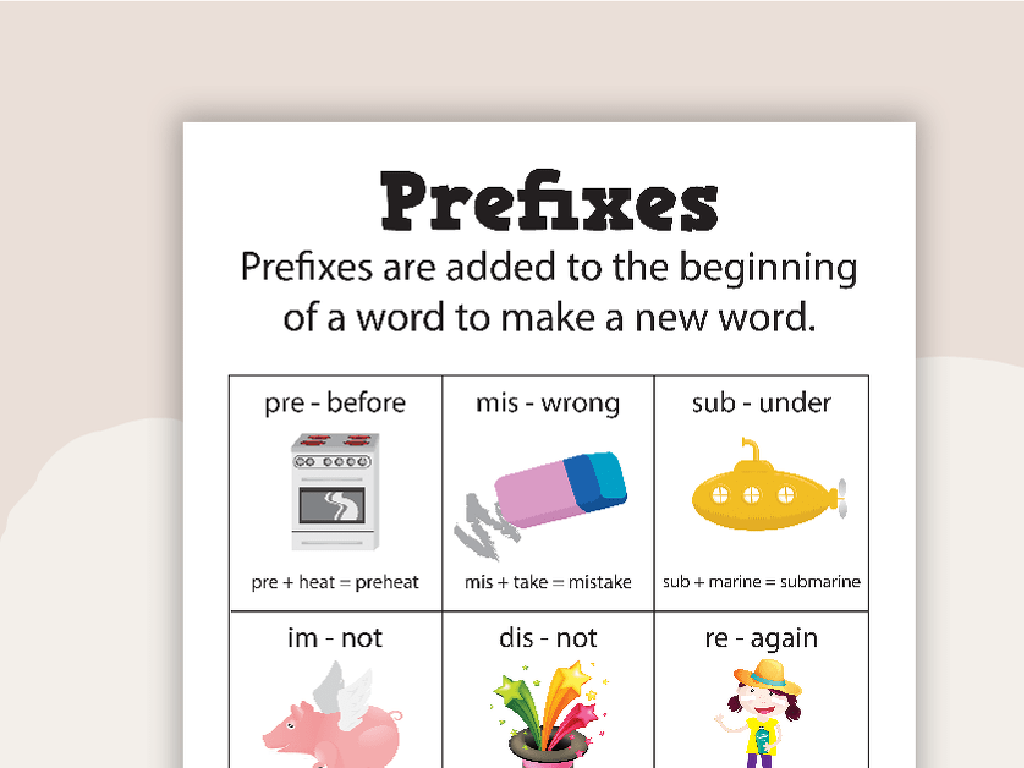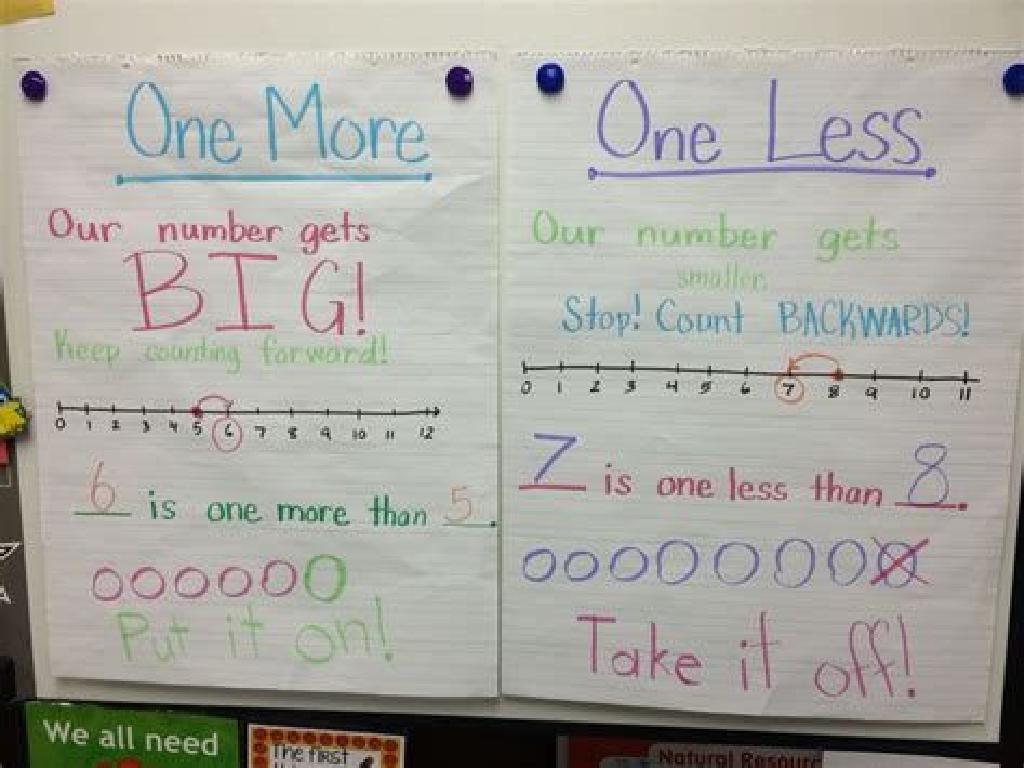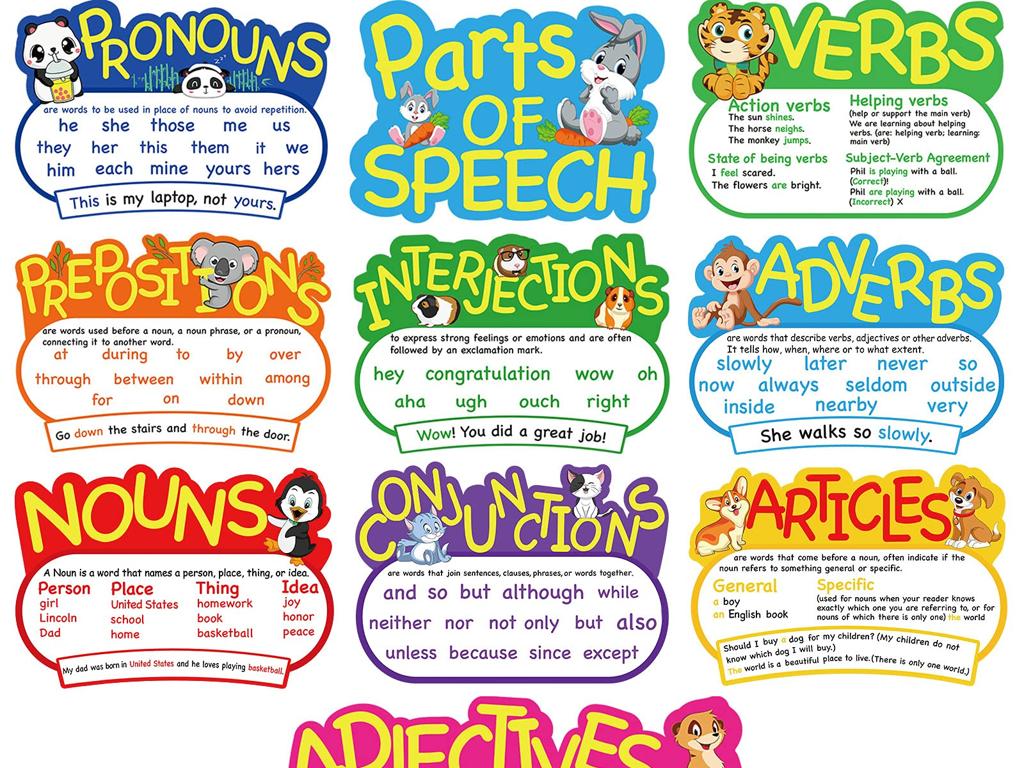Identify Equivalent Linear Expressions: Word Problems
Subject: Math
Grade: Seventh grade
Topic: Equivalent Expressions
Please LOG IN to download the presentation. Access is available to registered users only.
View More Content
Understanding Equivalent Expressions
– Deciphering algebraic language
– Algebra uses symbols to represent numbers and operations.
– Defining equivalent expressions
– Expressions with the same value, even if they look different.
– Applying expressions to real life
– Use in budgeting, cooking, or construction projects.
– Exploring examples and scenarios
– For instance, 2(3x + 4) and 6x + 8 are equivalent.
|
This slide introduces students to the concept of equivalent expressions in algebra, a fundamental skill in understanding and solving equations. Start by explaining the symbols and terms used in algebraic expressions. Then, define what makes two expressions equivalent, emphasizing that they yield the same result despite their different appearances. Illustrate with real-life examples where equivalent expressions are used, such as in calculating budgets, recipes, or measurements in building projects. Provide clear examples to show how different expressions can be equivalent, and prepare to demonstrate this with additional problems in class.
Understanding Linear Expressions
– Definition of an expression
– An expression is a combination of numbers, variables, and operations.
– Expressions represent numbers
– They stand in for specific numerical values.
– Expression components
– Terms are the parts added or subtracted, coefficients multiply the variable, and variables are symbols that represent numbers.
– Examples of simple expressions
– For instance, 3x + 2 and 7 – y are both simple expressions.
|
This slide introduces the concept of expressions in mathematics, which are fundamental to understanding algebra. An expression is a mathematical phrase that can include numbers, variables, and operation symbols but does not have an equality sign like an equation. It’s important to explain that expressions can represent specific numbers and are made up of terms, which are the separate elements combined by addition or subtraction. Coefficients are the numbers that multiply the variables, which are symbols standing in for unknown values. Provide examples of simple expressions and explain each component. Encourage students to identify terms, coefficients, and variables in each example. This foundational knowledge will be crucial for solving word problems involving equivalent expressions.
Identifying Equivalent Linear Expressions
– Understanding equivalent expressions
– Expressions are equivalent if they simplify to the same value.
– Methods to determine equivalence
– Check equivalence by simplifying or using substitution.
– Using equality properties
– Apply commutative, associative, distributive properties.
– Solving word problems
– Apply concepts to real-world scenarios with variables.
|
This slide introduces the concept of equivalent expressions in the context of word problems. Students will learn that equivalent expressions are different expressions that have the same value when simplified. They will explore methods to determine if two expressions are equivalent, such as simplifying both expressions or substituting values for variables. Emphasize the use of properties of equality, including commutative, associative, and distributive properties, to identify equivalence. Finally, students will apply these concepts to solve word problems that involve finding equivalent expressions. Encourage students to practice with examples and to understand how these skills apply to real-life situations.
Equivalent Expressions in Word Problems
– Translate words to math expressions
– Convert verbal descriptions into algebraic expressions
– Find equivalence in real-world scenarios
– Use expressions to solve and understand everyday situations
– Example: Service plan cost comparison
– Compare two mobile plans using expressions to find the better deal
– Practice with diverse problems
|
This slide introduces students to the concept of creating and identifying equivalent linear expressions within the context of word problems. Start by explaining how to translate verbal statements into mathematical expressions. Emphasize the importance of understanding the real-world application of these skills by finding equivalence in various scenarios, such as budgeting or comparing costs. Use the example of comparing two service plans to illustrate how expressions can represent different options. Encourage students to practice by creating their own word problems and translating them into expressions. This will help solidify their understanding and prepare them for more complex algebraic concepts.
Solving Word Problems with Linear Expressions
– Carefully read the problem
– Understand the scenario before solving
– Find key information and variables
– Look for numbers, relationships, and what’s being asked for
– Translate into a linear expression
– Use math to represent the words
– Solve for the unknown
– Apply algebra to find the solution
|
This slide is aimed at guiding students through the process of solving word problems by identifying equivalent linear expressions. Start by reading the problem thoroughly to understand the context and what is being asked. Next, pinpoint the important information and the variables involved. Then, translate the problem into a mathematical expression, setting up the equation based on the relationships between the variables. Finally, solve for the unknown variable. Encourage students to practice by providing examples of word problems and working through them step by step. Emphasize the importance of each step in the process to ensure a comprehensive understanding of how to approach and solve word problems in algebra.
Equivalent Linear Expressions: Practice Problems
– Expression for a scenario
– Write an expression for total cost of x movie tickets at $8 each
– Are scenarios equivalent?
– Compare expressions for x books at $7 and y books at $5 + $10 fee
– Discuss solutions
– Share problem-solving strategies
– Discuss different methods to solve the problems
|
This slide is aimed at providing students with practice problems to apply their knowledge of equivalent linear expressions. For the first problem, students will need to create an expression that represents a given scenario, such as finding the total cost for a number of movie tickets. The second problem challenges students to determine if two different scenarios result in equivalent expressions, which requires them to analyze and compare the expressions. Encourage students to discuss their solutions and the strategies they used to solve the problems. This will help them understand different approaches and reinforce their learning. Provide guidance on setting up equations and simplifying expressions, and remind them to check their work for accuracy.
Class Activity: Equivalent Expressions Challenge
– Pair up and solve real-world problems
– Design your own word problems
– Think of situations where you use math daily
– Present solutions to the class
– Engage in a group discussion
– Share different approaches to the same problem
|
This activity is designed to foster collaboration and critical thinking among students as they apply their knowledge of equivalent linear expressions to solve and create real-world problems. By working in pairs, students can discuss their thought processes and problem-solving strategies. Encourage them to think of everyday scenarios where math is applicable, such as shopping budgets or measuring ingredients for a recipe, to create their word problems. After solving and creating problems, each pair will present their solutions and discuss the various methods used to reach the same answer. This will help them understand that there can be multiple ways to approach a problem, and discussing these methods can lead to deeper understanding. Provide guidance and support as needed, and ensure that each student is actively participating.
Wrapping Up: Equivalent Expressions
– Reviewing equivalent expressions
– Why equivalence matters in algebra
– Equivalence is key to simplifying and solving algebraic equations effectively.
– Keep practicing with homework
– Try additional problems to master the concept.
– Confidence in solving word problems
– With practice, you’ll be able to tackle more complex problems with ease.
|
As we conclude today’s lesson on equivalent linear expressions, it’s important to revisit the core concept of what makes expressions equivalent. Understanding this foundational element is crucial for success in algebra, as it allows students to simplify and solve equations efficiently. Encourage students to continue practicing at home with various word problems to reinforce their learning. Provide them with additional practice problems that challenge their understanding and help them build confidence. Remind them that mastering equivalence is a step towards conquering more advanced math topics.






